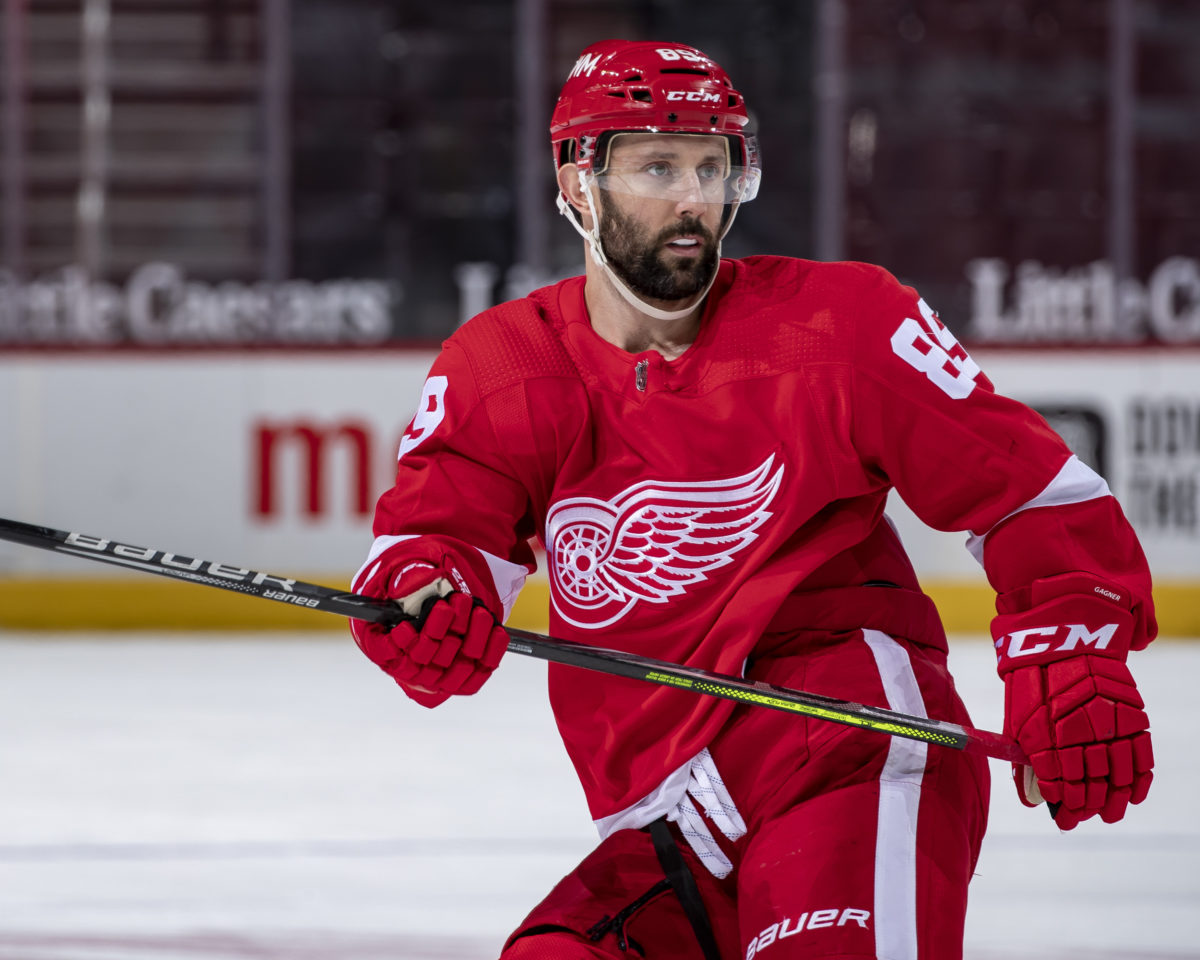The Columbus Blue Jackets have been around for a while, but while entering their 22nd season, they’re still one of the league’s newest teams. While they don’t have the lengthy and illustrious history that an Original Six squad might have, an abundance of talent has flowed through Ohio.
The franchise’s top dog, is without a doubt, Rick Nash, who holds the lead in games played, goals, assists, and points. The trade of Cam Atkinson will likely keep those titles in Nash’s name for the foreseeable future.
Other greats include more recent players like Artemi Panarin and the recently departed Atkinson, Nick Foligno, and Seth Jones. While these guys are often credited as bringing the most success that the organization has seen, there are certain players who were in town for a short amount of time but still made a definite impact.
We’ll be looking at the best one-and-done players in Columbus history. Players who spent less than 82 games on the Blue Jackets roster, with their success coming in one season and having played no more than five games with the team in any other season.
Sam Gagner – 2016-17
Sam Gagner had been knocked out of the top-line centre role in Edmonton, thanks to higher drafted Ryan Nugent-Hopkins. And after a couple of seasons bouncing around in Arizona and Philadelphia – which included a stint in their minor league system – Gagner’s value was as low as it had ever been. A league-minimum salary was enough for general manager Jarmo Kekalainen to take a swing at the former sixth overall pick.

The 2016-17 season was the best season in team history, statistically, as they cracked 50-wins and 100-points for the only time in history. Also, a highlight of that year was the second-longest winning streak in NHL history at 16 games.
Despite being slated mostly on the fourth line, Gagner was a big part of that effort (from ‘Former Oiler Sam Gagner finds new life in Columbus,’ Edmonton Journal, 12/13/16). He found a home on the top power-play unit, which he credits as giving him the confidence to put out his career-high in points with 50, which was fifth-best on the team. He also had his strongest power-play effort, with eight goals and 18 points on the man advantage.
Columbus wound up flaming out in the playoffs in five games to the Pittsburgh Penguins – which was the start of a streak of four seasons in which they lost to the eventual Stanley Cup Champion or finalist.
Gagner was seen as a key depth player headed into the series, but only contributed two assists and a minus-3 rating. He left Ohio after the season, capitalizing on his strong stats and signing a three-year pact worth $3.15-million per season. He hasn’t yet returned to the heights he reached in 2016-17, and he has bounced around from Vancouver to Edmonton, and now Detroit.
Curtis Sanford – 2011-12
Curtis Sanford’s ride in Columbus didn’t have the flair that Gagner’s did, but he was a steady piece in an otherwise lackluster season for the team. The 2011-12 season was the team’s worst since the full lockout season, as the team finished with 65 points, by far the worst in the league.
Presumptive team starter Steve Mason, who had owned the crease since his Calder Trophy performance in 2008-09, began to falter early on, showing his inexperience as he entered his age 23 seasons.
That’s where 32-year-old Sanford’s time in Columbus came into being. He was fresh off of three strong seasons in the American Hockey League (AHL), and looking for an NHL home. He had played in a backup role for both the St. Louis Blues and Vancouver Canucks, and held over a decade of pro-hockey experience.

(Jeanine Leech/Icon SMI)
Sanford played well enough behind a shotty defensive corps and led many to ponder if he should be actually considered for the team’s starter, supplanting Mason. He made a strong case but found himself oft-injured throughout his career, which hurt his long-term prospects of being a starting goalie.
In his season with Columbus, he played 36 games that season, having a nearly equal share with Mason, and statistically blew him out of the water. Sanford’s 0.911 save percentage (SV%) was a drastic improvement over Mason’s 0.894 SV%. His injuries, though, may have been too much for a team looking for reliable goaltending.
After the season, Sanford wasn’t re-signed. The final nail in his coffin may have been the injury he sustained on March 18 against the Calgary Flames, which kept him out of the remainder of the season. After which, Mason won four of the seven remaining starts. Sanford chose to head over to Yaroslavl in the Kontinental Hockey League (KHL), where he spent three successful seasons before retiring.
The Blue Jackets decided to stick with the younger Mason, who had one more season on his deal. Mason was traded the next year after losing the crease to Sergei Bobrovsky due to poor performance. Bob went on to win the Vezina Trophy as the top goalie in the league after dragging the team to just short of a playoff berth, missing out on the last spot to the Minnesota Wild by a tie-breaker.
Marko Dano – 2014-15
Yes, I know Marko Dano played three games in Ohio again in 2019-20, however, his rookie campaign is the one-and-done season we’ll be looking at.
A product of the last time the Blue Jackets had three first-round picks in a draft, in 2013, Dano was the third selected of the bunch behind Alexander Wennberg and Kerby Rychel. Dano was drafted out of Bratislava in the KHL and spent another season there before making his way across the pond.

He spent 49 games with the Springfield Falcons, Columbus’ then-AHL affiliate, before getting the call halfway through his first North American season to play with the big squad. Dano had a strong showing with 21 points through 35 games and an even stronger finish, during which he was on the scoresheet 14 times out of his last 15 games.
Dano looked like he would be an impact player in Columbus for years to come. However, his legacy in Columbus will be based more so on his boosted trade value from that hot start, which allowed the Blue Jackets to move him as a key player in a package to acquire two-time Stanley Cup Champion Brandon Saad from the Chicago Blackhawks. Even further down that trade tree is Saad, who was shipped back to Chicago in exchange for Columbus’ now leader in points-per-game, in Panarin. Quite the impact.
Dano couldn’t make it stick in Chicago, despite spending some time on the top line with peak Jonathan Toews, and less than a year later found himself traded at the deadline to Winnipeg.
What Could Have Been
One can’t help but wonder how different the fate of these players and the Blue Jackets franchise would have been had they stuck around longer than a season.
- Would Gagner have turned into a top-six forward to be relied on for the foreseeable future?
- Would Sanford have been able to pick up one more win than Mason in the 2012-13 season to push them into the playoffs?
- Could Dano have had the same level of output that Saad did if he kept developing in the Blue Jackets system?
We’ll never know. But in the dog days of summer, it’s worth a thought.